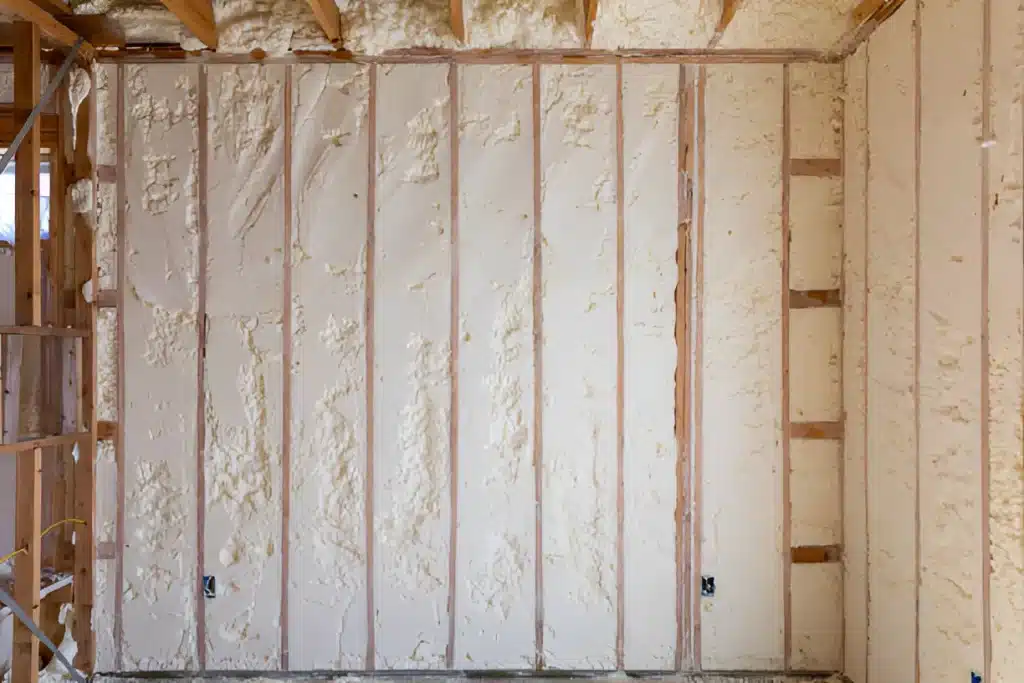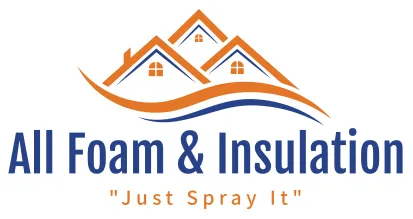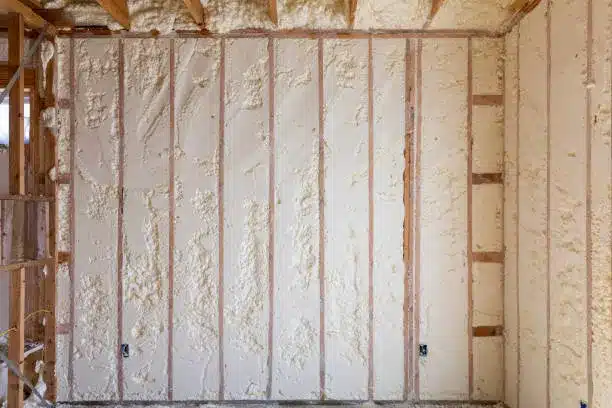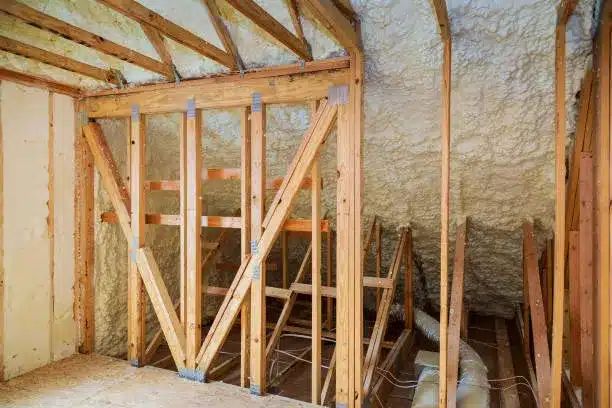Closed-cell spray foam is generally the better choice for homes in Grant Pass. The region’s wet climate and seasonal temperature fluctuations require insulation that prevents moisture infiltration, adds structural rigidity, and retains consistent R-values over time. Open-cell spray foam is still viable for certain interior applications but lacks the moisture barrier and compressive strength of its closed-cell counterpart.
Most Grant Pass homes benefit from a hybrid approach. Closed-cell insulation is ideal for crawl spaces, basements, and roof decks. Open-cell may be used in interior wall cavities where breathability is acceptable. Understanding the building layout, existing materials, and exposure to humidity or wind-driven rain helps determine the right type. This article outlines technical comparisons, regional suitability, and key decision points.
All Foam & Insulation, LLC has direct field experience with insulation performance across Western Oregon’s varied structures and microclimates. The insights provided here reflect years of real-world applications and performance outcomes.
How Closed-Cell and Open-Cell Spray Foams Compare
| Feature | Closed-Cell Spray Foam | Open-Cell Spray Foam |
|---|---|---|
| R-Value (per inch) | 6.0 – 7.4 | 3.5 – 3.9 |
| Water Resistance | High | Low |
| Vapor Barrier | Yes | No |
| Air Barrier | Yes | Yes |
| Application Areas | Exterior walls, crawl spaces, roofing | Interior walls, soundproofing |
| Expansion Rate | Low | High |
| Density | ~2.0 lb/ft³ | ~0.5 lb/ft³ |
| Structural Reinforcement | Yes | No |
| Cost per Square Foot | Higher | Lower |
Why Closed-Cell Performs Better in Grant Pass Homes
The Willamette Valley climate presents several insulation challenges:
- High year-round humidity
- Frequent rainfall
- Cold winters and warm summers
Closed-cell spray foam resists moisture absorption and prevents condensation within wall assemblies. In crawl spaces and rim joists common problem areas for Grant Pass homes this can prevent wood rot, mold growth, and long-term energy inefficiencies.
Open-cell foam, while better for sound dampening, can absorb moisture if exposed to humid air. In poorly ventilated or semi-conditioned zones, it may lead to building envelope failures.
Bonus Tip: Use closed-cell foam as a thermal break under roof sheathing in homes without vented attics. This improves HVAC efficiency and reduces thermal bridging.
Technical Data Reference for Spray Foam Materials
| Property | Closed-Cell Foam | Open-Cell Foam |
|---|---|---|
| Perm Rating (1″ layer) | <1.0 (Vapor Retarder) | >10.0 |
| Compressive Strength | 25 – 30 psi | 4 – 10 psi |
| Aged R-Value Retention | High | Moderate |
| Flame Spread Index (ASTM E84) | <25 | <25 |
| Smoke Development Index | <450 | <450 |
Source: SPFA Technical Guidelines and ICC-ES AC377 testing standards.

Things to Know Before Choosing Spray Foam
Several pre-installation factors influence spray foam selection:
- Building Envelope Type: Unvented roofs, basement walls, and crawl spaces benefit from the moisture control of closed-cell foam.
- Sound Control Needs: Interior partition walls with open-cell foam reduce airborne noise better.
- Local Code Compliance: Oregon building code allows both types, but placement and fire barrier rules differ.
- Conditioned vs. Unconditioned Spaces: Closed-cell foam is better for unconditioned or semi-exposed spaces.
Bonus Tip: In older Grant Pass homes with knob-and-tube wiring or limited cavity depth, closed-cell foam should only be installed after full system evaluations.
Common Service Options Provided by All Foam & Insulation, LLC
The following services align with the insulation needs discussed:
- Closed-Cell Spray Foam – Best suited for moisture-prone areas and structural reinforcement.
- Open-Cell Spray Foam – Effective for interior partitions where air sealing and sound control are priorities.
- Blown-In Insulation – Ideal for retrofitting attics or filling existing wall cavities.
- Membrane Roofing – Protects structures with low-slope roofs from water ingress when paired with closed-cell foam.
Common Questions About Spray Foam Types for Grant Pass Homes
Why is closed-cell spray foam recommended for Grant Pass homes?
Grant Pass has a humid, wet climate, making moisture resistance essential. Closed-cell spray foam adds a vapor barrier, structural strength, and retains R-value even in damp conditions, making it the top choice for most areas of the home.
Can I combine closed-cell and open-cell spray foam in one home?
Yes. Many Grant Pass homes use a hybrid approach — closed-cell in basements, crawl spaces, and roof decks, and open-cell in interior wall cavities where soundproofing and breathability matter more than moisture resistance.
What should I consider before choosing between open-cell and closed-cell foam?
You should consider the location of application (interior vs. exterior), exposure to moisture, soundproofing needs, and local building codes. Closed-cell is ideal for unvented or semi-exposed spaces, while open-cell works best in dry, conditioned interior areas.
Evaluate Insulation Based on Building Use
Choosing the best spray foam depends on exposure, structure type, and use of the insulated space. Closed-cell offers superior thermal and moisture protection for homes. Open-cell works best in conditioned, interior applications with low moisture exposure. The best result often comes from a blended approach.
Get Professional Help for the Right Fit
Contact All Foam & Insulation, LLC to discuss site-specific insulation solutions. Speak with experts at (541) 826-9600 or email [email protected] to determine the right product for your home’s layout, age, and climate exposure. Field-tested strategies help ensure that the insulation performs as intended in Grant Pass’s unique conditions.
Frequently Asked Questions
Should closed-cell spray foam be used in attic spaces?
Yes, if the attic is unvented or if HVAC equipment runs through it. This reduces thermal loss and condensation.
Can I mix insulation types in one home?
Yes. Hybrid systems use closed-cell in moisture-prone areas and open-cell for interior spaces to balance cost and performance.
Is open-cell foam ever appropriate in exterior walls?
Not in Grant Pass’s damp climate unless paired with a vapor retarder and drainage plane.
How thick should spray foam be applied?
Closed-cell: 2″ minimum for most applications. Open-cell: 3″ to 5″ depending on cavity depth and code.





